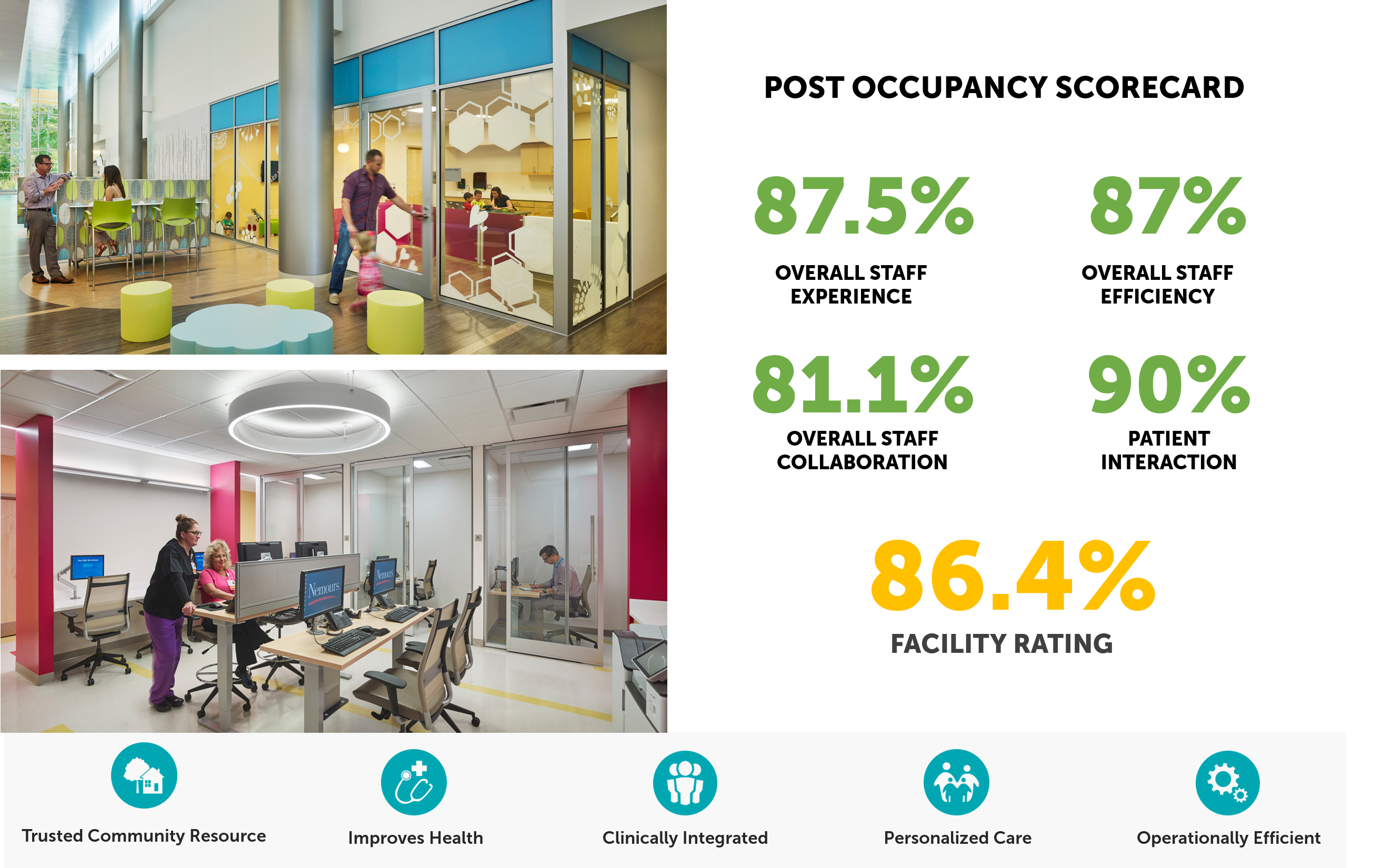As architects specializing in healthcare, we long to create built environments that make a mark both aesthetically and operationally. We want to design a space that is scientifically measured to deliver a positive user experience, operational efficiency, high quality of care and effective safety and infection control. To this end, Post Occupancy Evaluations (POEs) are vital as they enable us to create a library of research-informed design strategies proven to work through evidence-based processes.

Before the Design
Predesign research is a collaborative, integrated process where research is conducted through literature reviews, tested past project experience and the recording of precise measurements to develop baselines for future comparisons. The project goals, guiding principles and metrics dictating positive outcomes are developed during predesign research using a performance framework as an organizing structure. The goals, principles and metrics are traced throughout the project and translated during design into innovative design solutions with the client’s vision in mind. Consequently, innovation becomes well founded. Methodologies may have been standardized, but new ideas are incorporated with special attention to our clients’ perspectives.
Why We Need POEs
Our clients want design decisions informed by experience and a keen awareness of new developments in healthcare. In order to deliver to clients beautiful designs that are data-informed, experience, education and a passion for science-based investigation are essential. The result of a fully-explored healthcare design is an inviting environment that intuitively provides safety, comfort, efficiencies and the assurance evidence-based research is at the root of every patient, doctor, and visitor experience.
I have conducted POEs encompassing 1.7 million square feet of built and analyzed all types of healthcare environments from conventional clinics to very large hospitals. My translation of pre-and post-occupancy evaluations has resulted in design guidelines that optimize operational efficiency, clinical effectiveness and user experience. These guidelines led to the development of a design checklist, which I’ve presented at numerous Healthcare Design conferences and is now widely accepted as directly informing evidence- based decisions.
By blending the pursuit of measurable outcomes with innovation, healthcare desigeners can inspire their team to deliver innovation solutions rooted in research. I’ve had the opportunity to bring my knowledge and enthusiasm to many clients, including Fort Belvoir Community Hospital, University Health System, Chase Brexton, Hennepin County Medical Center and the Village Facility Medicine – and now look forward to working with Array’s POE-passionate team.
Explore how Array’s POE process is influencing care at the Philadelphia Navy Yard.
{{cta(‘d770edfe-8b8d-4d93-852d-bbf2c8398d35’)}}





